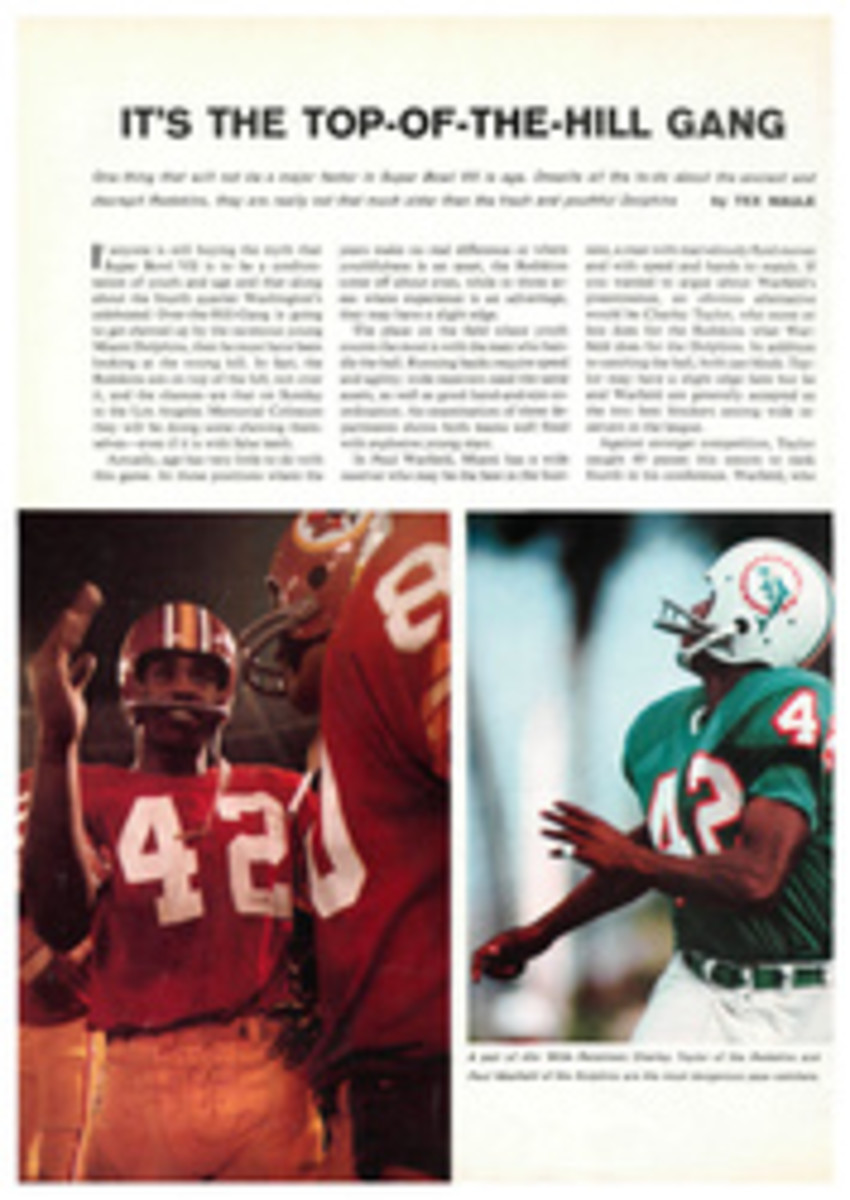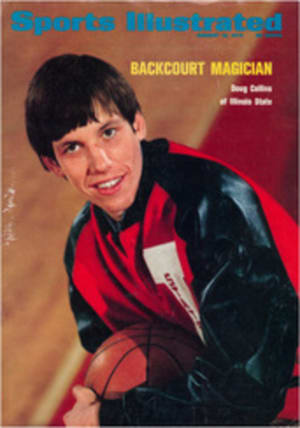
A look at the old gray mare
Kelso and Exterminator before him raced till they were nine, Armed and Native Diver till they were eight, and for the best of reasons. They were geldings whose only value was on the racecourse. The point is made because a certain amount of the lessening popularity of thoroughbred racing in this country has been attributed to the premature retirement to stud of our hero horses as soon as they have gained a measure of fame.
It would be ironic, in a sport dedicated to heredity, if to keep the game alive we found ourselves depending on horses who cannot reproduce. It was not always so. Equipoise and Discovery were stallions who despite being highly weighted in handicaps showed up for work each spring to take on all comers at all distances, Equipoise racing till he was seven—although that was 40 years ago. In more recent times it has been hard to find even a 5-year-old stud racing in the big handicaps under top weight. Unfortunately, if a horse is to continue his career past his 3-year-old season, it must be in the handicaps.
This has been seized upon by owners of the best 3-year-olds as justification for withdrawing their colts from the arena. Handicappers, it is said, break colts down with unbearable imposts.
There is no question that our racing suffers from a spate of handicaps, which remain the best way to attract a full field for a Saturday feature. Track managements want the best horses, but they also want the most. The owners of the best horses often have more to lose than a winner's pot. The market for ballplayers is controlled by the club owners, with the blessing of our highest tribunal, but the market for thoroughbred stallions ranges all the way up to $5 million, and every defeat decreases the price.
There are ways of dealing with the handicap problem. Weight-for-age races, in which the only weight concessions are for sex and age, may be anathema to track operators who want no 1-to-9 shots diminishing the betting, but harness racing has made it big despite a succession of invincibles who go 12 for 12 in that unweighted sport. Certainly we can afford more than the eight weight-for-age races scheduled to be run in the U.S. in 1973. We have other variations: the allowance stakes, in which the weights carried are based on money won, and invitational handicaps, in which the spread of weights is reduced by requirement of a minimum quality in those invited. Both of these can accomplish at least part of our objective: to give the fans established performers to engage their attention and their affection.
This presupposes that there is still a sizable public out there waiting to be captivated. Many people in racing are concerned that we have worn out several generations of horseplayers without doing anything at all to develop a new crop. American racing drew crowds of close to 50,000 when the population was half today's, but the recreational habits of the citizenry were altogether different. The barbershop and saloon were the hubs of a man's world, and the family that played together was rare. Only rich people had second homes and boats, and racing's sole competitor as a spectator sport was baseball. In the struggle today for the recreation dollar, the rapid disappearance of racing's headliners could be a major factor in the waning interest in the sport. Even a radical change in our programs may not alter that.
The trouble with affluence as a lifestyle is that one is never quite affluent enough. Horse owners beset by tax collectors who never bothered their grandfathers may be excused for paying attention to the financial realities of their racing operations, which require that they show a profit at least two years out of seven. There were no such requirements when Equipoise was dominating the handicaps in New York in 1933. He raced nine times that year, carrying weights up to 135 pounds, and won his first seven starts, including the historic Metropolitan and Suburban Handicaps and the Hawthorne Gold Cup. His earnings for the year came to $55,760, less than the winner's share of any one of the 23 $100,000 handicaps we now run for older horses. Compared with the $416,022 Cougar II collected in 1971, it is not an imposing figure, but everything was less in 1933. Including stud fees.
Which brings us to the other reason why we see so few old familiar faces in the handicap lineups. Top dollar for a stallion service in 1933 would have been $2,000, with the privilege of return, which meant that if your mare did not get in foal, you and she were entitled to another try. Now in Kentucky a stallion's fee may be $40,000, with no return, and there are very few such investment opportunities on the market. In other words, Equipoise's take-home pay as a racehorse in 1933 was not too much below his potential as a stallion had his owner decided that season to put him to stud. But nowadays a top-bracket stallion probably could produce on the racecourse only one-quarter of the income available to his owners in the breeding shed.
The mathematics actually are not that simple. Nobody stands a $2 million stallion for cash anymore: horses are syndicated, with shares being sold to a select list of subscribers, the rule of thumb being to price a share at three times the cost of an annual service. This gives the owner a handsome capital gain, makes certain that the stallion's book will be filled with quality mares, divides the risk of his sudden death or injury and gives the subscribers trading material in stallion services in what has become essentially a barter economy. Compare this with keeping your champion in training, knowing that his record necessarily will require that he carry the heaviest weight in handicaps and that some young 3-year-old could obliterate him in the autumn weight-for-age classics. There is also the danger of losing the horse altogether in a racing or training accident. Very few people can afford to turn over high cards for sums like $1 million or $2 million.
Our immediate problem is that we have allowed racing to get seriously out of balance in the disparity between the financial returns from breeding and racing. Our larger problem is the disparity between horse racing's image as a recreation and as a tax producer. There are too many states trying to make an easy buck out of the sport, too many tracks competing for the same tired animals. Every new jurisdiction that offers a $100,000 extravaganza lessens the chance that any $100,000 stake will draw a field worthy of the prize, and the only law to limit the glut is the law of diminishing returns.
For commercial ills, commercial remedies. Since there is little prospect of persuading the owners of household-word horses to keep them operative for the public's sake, the alternative is to create new household-word horses by means of television and a proper type of off-track betting. Given the unfortunate results of OTB in New York, this must sound at least demented, but off-track betting has been the making of the best racing in the world in France. In Japan, where the number of major tracks is limited to 12, it has produced a phalanx of buyers who are the strength or the abomination, depending on your buy-or-sell position, of international bloodstock auctions.
In this country we have discovered that the expansion of racing from state to greedy state results only in its deterioration into a business, run mainly for tax purposes. You may wonder how off-track betting can reverse this trend, but there is hope in the late dispatches from Connecticut. There they have enacted a pari-mutuel betting bill that envisions the establishment of super horse rooms, complete with bars and other semblances of Las Vegas, long before ground is broken for the first racetrack. The idea is to rent racing by television from neighboring New York. If every nonracing state with a financial problem, which is to say all of them, were to do the same, quality racing might stand a better chance of survival. The racing, being less, would have to be better, and the only losers would be the breeders of the worst horses, whose names, regrettably, are legion.

